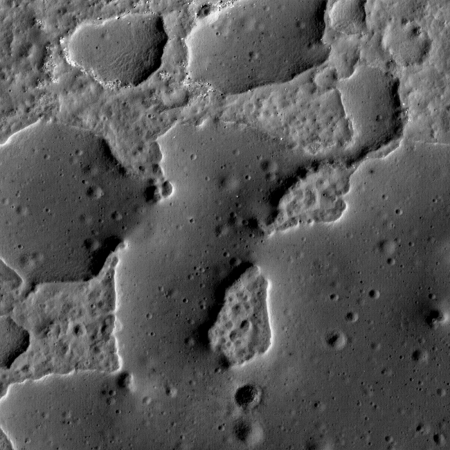Trump administration proposes revisions to Endangered Species Act
The Trump administration has proposed some regulatory revisions to Endangered Species Act that would scale back somewhat its sometime draconian powers.
The proposed regulatory changes are both technical and consequential. One, for instance, bears the deceptively dull title of “elimination of blanket 4(d) rule” (E&E News PM, 4 April). The ESA prohibits the “take” of species designated as endangered, while Section 4(d) of the law allows the agency to establish special regulations for threatened species. In 1978, FWS used this authority to extend the prohibition of take to all threatened species. This is known as the “blanket 4(d) rule.”
Take covers a wide range of actions, including those that “harass, harm, pursue, hunt, shoot, wound, kill, trap, capture or collect” a threatened or endangered species. This blanket 4(d) rule for threatened species can be modified by a species-specific 4(d) rule.
Conservatives and private-property advocates have previously sought to scale back the blanket 4(d) rule, which they say erases what should be a meaningful distinction between threatened and endangered species. The proposal would cover only future listings. “Some of our regulations were promulgated back in 1986, and frankly, a great deal has been learned by the agencies administering the act and by the public,” Deputy Interior Secretary David Bernhardt told reporters today.
Another change would establish that the “foreseeable future” definition used in making ESA listing decisions extends only so far as officials “can reasonably determine that the conditions posing the potential danger of extinction are probable.”
A potentially key change involves critical habitats, which are areas important for recovery of a species. Sometimes an area can be considered important for recovery even when it is not currently occupied by the species in question. Under the new proposal, FWS and NOAA Fisheries will designate unoccupied critical habitat only when the occupied areas are inadequate to ensure the conservation of the species or if inclusion of unoccupied areas would yield certain other specified benefits.
In some “rare” cases, officials say, there may be no critical habitat designated.
The article above, from the journal Science, shocked me by its reasonable discussion of these proposed changes. I had expected an anti-Trump screed, similar to the original version of this Daily Mail article from yesterday. Today it reads more reasonably, but yesterday the article was far more devoted to airing opposition to the Trump proposals.
No matter. There is madness out there, it has taken possession of the entire anti-Trump community. It won’t make a difference how reasonable the administration’s proposals might be, there will be over-the-top declarations about the evils of these proposals and how they will destroy everything.
The Trump administration has proposed some regulatory revisions to Endangered Species Act that would scale back somewhat its sometime draconian powers.
The proposed regulatory changes are both technical and consequential. One, for instance, bears the deceptively dull title of “elimination of blanket 4(d) rule” (E&E News PM, 4 April). The ESA prohibits the “take” of species designated as endangered, while Section 4(d) of the law allows the agency to establish special regulations for threatened species. In 1978, FWS used this authority to extend the prohibition of take to all threatened species. This is known as the “blanket 4(d) rule.”
Take covers a wide range of actions, including those that “harass, harm, pursue, hunt, shoot, wound, kill, trap, capture or collect” a threatened or endangered species. This blanket 4(d) rule for threatened species can be modified by a species-specific 4(d) rule.
Conservatives and private-property advocates have previously sought to scale back the blanket 4(d) rule, which they say erases what should be a meaningful distinction between threatened and endangered species. The proposal would cover only future listings. “Some of our regulations were promulgated back in 1986, and frankly, a great deal has been learned by the agencies administering the act and by the public,” Deputy Interior Secretary David Bernhardt told reporters today.
Another change would establish that the “foreseeable future” definition used in making ESA listing decisions extends only so far as officials “can reasonably determine that the conditions posing the potential danger of extinction are probable.”
A potentially key change involves critical habitats, which are areas important for recovery of a species. Sometimes an area can be considered important for recovery even when it is not currently occupied by the species in question. Under the new proposal, FWS and NOAA Fisheries will designate unoccupied critical habitat only when the occupied areas are inadequate to ensure the conservation of the species or if inclusion of unoccupied areas would yield certain other specified benefits.
In some “rare” cases, officials say, there may be no critical habitat designated.
The article above, from the journal Science, shocked me by its reasonable discussion of these proposed changes. I had expected an anti-Trump screed, similar to the original version of this Daily Mail article from yesterday. Today it reads more reasonably, but yesterday the article was far more devoted to airing opposition to the Trump proposals.
No matter. There is madness out there, it has taken possession of the entire anti-Trump community. It won’t make a difference how reasonable the administration’s proposals might be, there will be over-the-top declarations about the evils of these proposals and how they will destroy everything.








